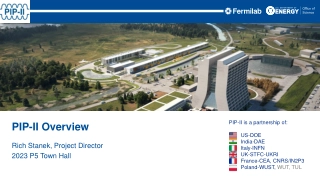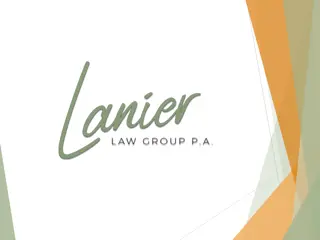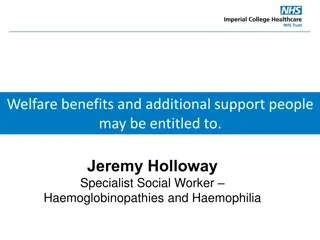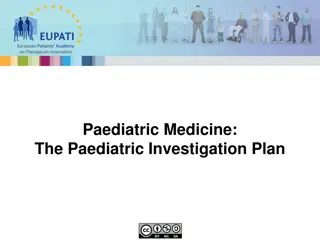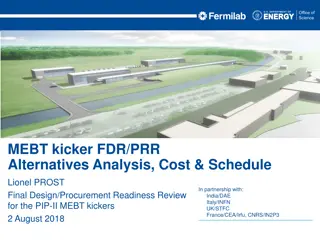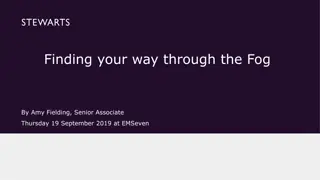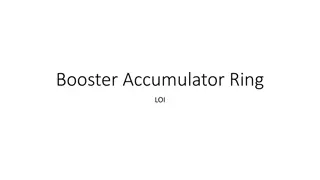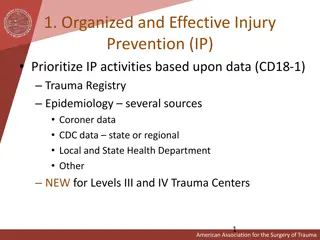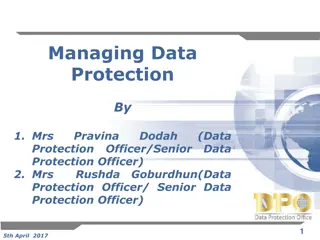Understanding Personal Injury Protection (PIP) Coverage in Pennsylvania
In Pennsylvania, individuals involved in accidents must seek medical care within 14 days to be eligible for PIP coverage. Receiving initial treatment from various healthcare professionals is crucial, and follow-up care must align with the initial diagnosis. The presence or absence of an Emergency Medical Condition (EMC) impacts the benefits payable. Challenges to determining EMC may affect the amount of benefits received. This guide outlines the necessary steps to access PIP benefits and navigate the complexities of post-accident medical care in Pennsylvania.
Uploaded on Sep 11, 2024 | 0 Views
Download Presentation

Please find below an Image/Link to download the presentation.
The content on the website is provided AS IS for your information and personal use only. It may not be sold, licensed, or shared on other websites without obtaining consent from the author. Download presentation by click this link. If you encounter any issues during the download, it is possible that the publisher has removed the file from their server.
E N D
Presentation Transcript
INITIAL TREATMENT: An injured person MUST receive some type of medical care within 14 days of their accident or there is NO PIP coverage available. They can go anywhere for initial treatment. Hospital Ambulatory Care Center MD/DO and even Chiropractor Ambulance/EMTs
IF you are referred treatment is consistent with the underlying medical diagnosis referred from your initial provider AND consistent with the underlying medical diagnosis rendered AND your rendered you can obtain follow up care. Hospitals and ambulatory surgery centers can provide follow up care, as can PAs and ARNPs and PTs can if the referral is made by an MD or DO. Expect a lot of denial of charges (and resulting litigation if you wish to be paid) asserting that follow up care is not consistent with the underlying medical diagnosis and/or the follow up care was not based on a referral from initial treating health care provider.
$10,000 if there is an EMC $2500 if there is not an EMC EMC is no longer just an Emergency Department issue. It has now become a PIP issue that will affect not only hospitals, but: Radiologists Orthopedic Surgeons Family Practitioners Neurosurgeons Neurologists Pain Management
Ive Been in an Accident and Need Medical Care. What Do I Do? Did the accident occur more than 14 days ago? Yes No You need to be seen by an MD/DO/Dentist/Chiropractor and/or seek treatment at a hospital or a facility owned by a hospital within 14 days to preserve your PIP benefits. Have you had any accident related medical treatment rendered by: EMT, ambulance, or ER, or been seen by an MD/DO/Dentist/Chiropractor? No Yes There is no PIP coverage available to you. You may receive follow-up care: 1. Consistent with the underlying medical diagnosis 2. Based on a referral from an initial care provider: a. an MD/DO/Dentist/Chiropractor or their PA/ARNP b. a PT if referred by an MD/DO/Dentist/Chiropractor c. a hospital or a facility owned by a hospital d. a certified health care clinic
The PIP statute allows the determination of an EMC to be made after the fact the wording in the statute is has , not had . Expect rampant challenges to EMC it is the difference between an insurer paying out $2500.00 vs. $10,000.00 in benefits.
$2,500 $2,500 $10,000 $10,000 No EMC No EMC Royalty Free RF Clipart Illustration Of A Friendly Super Hero Captin by Cory Thoman EMC EMC EMC
Emergency medical condition means a medical condition manifesting itself by acute symptoms of sufficient severity, which may include severe pain, such that the absence of immediate medical attention could reasonably be expected to result in any of the following: (a) Serious jeopardy to patient health. (b) Serious impairment to bodily functions. (c) Serious dysfunction of any bodily organ or part.
The patient will be eligible for $10,000.00 if an MD/DO/PA/ARNP person had an Emergency Medical Condition (EMC). The patient will be eligible for a maximum of $2500.00 if any of the providers who rendered initial care or follow up care determines that the injured person did not Medical Condition. MD/DO/PA/ARNP determines that the injured did not have an Emergency
According to the Statute, a Chiropractor cannot determine if an Emergency Medical Condition exists, but can Medical Condition does not exist can determine that an Emergency does not exist.
The Statute does not say where in the course of treatment the EMC must be determined. It does not reference whether EMC is established during initial care or follow up care, nor does it say that an initial treating provider or follow up provider must be the one to determine that an EMC existed.
There are NO benefits for massage therapy or acupuncture. It does not matter what entity or licensed provider is rendering the service. Massage and acupuncture will not be reimbursed to an LMT, licensed acupuncturist or any other type of provider rendering those services Keep this in mind if your practice employs massage therapists or acupuncturists any other type of provider rendering those services.
If a PIP suit is in litigation and the provider requests notification of benefit exhaustion, the insurer must notify the insured/assignee within 15 days after PIP benefits have been reached. There is no obligation to provide this information prior to PIP litigation, no obligation to provide it unless requested and no remedy for a carrier s failure to notify of exhaustion.
Reimbursement is never to be lower than the 2007 Medicare rates. If it is, use the 2007 rates. Use the Participating Provider rates, as of March 1of the calendar year in which services were rendered to determine reimbursement for the remainder of that year. Use Medicare Part B for services and supplies Use DME Medicare Part B for Durable Medical Equipment
Usual and Customary charge (x80%) for providers of emergency services and care (MD s/DO s/Emergency Department physicians trauma physicians/orthopedic surgeons/radiologists) 200% of Medicare Part A (x 80%) for inpatient care (other than emergency service and care)
Permissive policy language litigation The Carrier must endorse their policy PROPERLY in order to use the fee schedules Carriers attempted to use the fee schedules when they had not endorsed their policies to allow for it, or endorsed them incorrectly
Kingsway Amigo vs. Ocean Health, Inc. (Fla. 4th DCA 2011) Carrier was not permitted to pay at the (lower) fee schedule rate when their policy did not have an endorsement electing payment in this fashion. Court determined there were two methods of reimbursement fee schedule and usual and customary and failure to specifically elect fee schedule required them to pay at usual and customary.
GEICO Indemnity vs. Virtual Imaging Services, Inc. (Fla 3rd DCA 2011) Carrier who did not endorse, have not properly endorsed include: State Farm, GEICO, Progressive, etc. NCCI Edits and OPPS reductions are now permitted if it doesn t constitute a utilization limit.
OPPS: Outpatient Payment Perspective System A creation of CMS Carriers attempted to use OPPS as a method of reducing fee schedule payments Nationwide Mutual Fire Ins Co. VS AFO Imaging (FLA 2nd DCA 2012)
NCCI Edits: National Correct Coding Initiative developed by CMS Carriers attempted to further reduce fee schedule payments to providers by refusing to pay for a second service rendered on the same day SOCC PL d/b/a South Orange Wellness vs. State Farm (Fla. 5th DCA 2012)
Must a carrier specifically include a policy endorsement in order to use the lower reimbursement amount (fee schedule) set forth in the PIP statute? The answer intended by the legislature when they amended 627.7311 is no ; however, the applicable section of 627.736 directly conflicts with this. This issue will only be resolved through PIP litigation.
This is intended for providers of emergency services and care and inpatient hospital treatment rendered by MDs/DOs/Dentists. This does not include hospitals. If an emergency service provider submits claims within 30 days of notification of a covered loss, those providers should be paid before the Hospital bill can exhaust the PIP benefits.
In the event of a partial payment or rejection, the carrier must provide an Explanation of Benefit that specifies the error or reason for rejection of the bill. A provider has the option to submit a corrected claim within 15 days of the receipt of the EOB and it will be deemed a timely submission. (No more USAA denials for untimely resubmission. ) Resubmission is not mandatory and it does not waive any other legal remedy for payment.
Examinations Under Oath (EUO) are now a condition precedent to receiving PIP benefits. Custer Medical Center vs. United (Fla 3rd DCA 2010)
If an injured patient does not attend an EUO, none of the medical providers have a right to payment until the patient sits for the Examination Under Oath.
A health care provider is not required to attend an EUO. The questions in an EUO are limited to relevant information including accident details, coverage eligibility, or claimant information, or information that could be reasonably expected to lead to relevant information.
The carrier used to be required to prove that an insured unreasonably refused to attend an IME, showing both that there was a refusal and that it was unreasonable. The language change now makes a refusal to submit or a failure to appear independent medical examinations a rebuttable presumption that the refusal/failure was unreasonable. This alters the burden and the standard to favor carriers. or a failure to appear at two
Claims are not reimbursable if they are generated as a result of unlawful activities outlined in chapter 817.505 of Florida Statutes. Providers engaging in referring patients for payment, receiving payment for a referral of patients, engaging in patient brokering or receiving kickbacks are committing fraud. These claims are not compensable.
If fraud is suspected, the carrier must notify the provider in writing within 30 days of the receipt of the claim that it is being investigated for suspected fraud. If notification is made, it extends the time to conduct the fraud investigation. The claim must be denied or paid with interest within 90 days of submission. The suspected fraud must be reported to the Department of Insurance Fraud.


